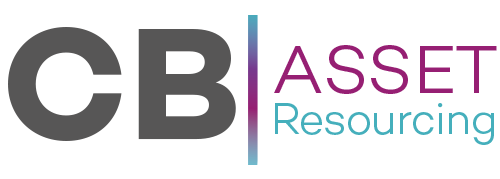- February 15, 2017
- Posted by: admin
- Categories: Business Tools, Candidate, Recruitment, Sales Tools, Social Media


It wasn’t that long ago that cold calling was the initial go-to prospecting technique for sales professionals… I remember being handed a yellow pages on the first day of my very first sales role (yes, an actual doorstop of a book; there was no yell.com back then!) and told to prospect. Gone are those days (thank goodness!), and whilst cold calling still does, and of course should, form part of our prospecting tool kit we now have a whole host of additional resources in the bag to help us refine our sales techniques, streamline our efforts and turn our network of potential prospects into warm leads. Queue LinkedIn.
As a sales professional and serial networker, I love LinkedIn. It’s a fantastic resource, albeit one which many people do not use to its full potential, and it still amazes me how many people I speak to on a daily basis that either don’t have a LinkedIn account or don’t utilise it as a sales tool!
A recent IDC social buying study has shown:
– 75% of the B2B buyers use Social Media to make buying decisions.
– 50% of B2B buyers use LinkedIn as a source for making purchase decisions.
– 76% of B2B buyers prefer to work with recommendations from their professional network.
So the bottom line is… If you’re not using LinkedIn as one of your key sales techniques then it’s time to get on board!
LinkedIn is at the forefront of connecting B2B buyers and sellers, but with over 467 million members it’s important to be able to stand out from the crowd and build your personal brand so you can maximise what LinkedIn can do for you.
Here are our 8 tips on using LinkedIn for sales prospecting to help you start turning your network into prospects:
- Create a strong professional brand
Be an active participant in your industry. Join LinkedIn groups and engage in discussions. You can be a member of up to 50 LinkedIn groups so get yourself involved! Also, joining the most appropriate groups can give you access to a wealth of specialised industry information and market intelligence.
- Build trusted relationships
Get introduced through referrals or common connections. Remember that 76% of us prefer to work with recommendations from their professional network.
- Meet the needs of the prospect first, sell second.
Sell the problem and the solution, not the product. Your customers are not interested in your job title, they want to know what you can do for them. So instead of your profile reading “Business Development Manager” which let’s face it doesn’t give much away, why not change it to something like “Supporting the UK’s SME market with affordable Commercial Finance solutions”. As a potential customer, they can clearly see what it is that you provide, and once you’ve grabbed their attention they can read all about the services you offer and company details etc on your summary… The purpose of your profile is to make sure you get them that far!
- Pleeeeeease. Keep it professional!
As a recruiter, one of the first things I do when receiving an application for a vacancy from a new candidate is check out their LinkedIn profile. Guess what… your customers do too! I’m looking for a professional profile with relevant career and industry experience… You’re trying to sell the professional version of you, not the “drunk on a Saturday night with your mates” version, so make sure your profile picture is professional, of a good quality and is of JUST YOU! You don’t want potential customers left trying to guess which one you are out of the four at the bar in sombreros downing shots of tequila… Remember this isn’t Facebook!
- Build your network and keep it relevant
The more people you are connected to, the more people will view your profile. I would advise only connecting with people who are relevant to your professional area, or people who are current and former colleagues or friends. Having 3000 connections is of no use to you if they are not within the industries/geographical areas that you work or operate in.
- Make sure that your page contains the right keywords
People search through Linkedin by using keywords. These may be sectors, asset types, job titles, company names or software packages to give a few examples. If you don’t have the right keywords displayed, you won’t come up in any searches!
- Post regular, relevant and interesting content
Spamming your network with irrelevant content will only drive connections away. Post interesting industry news which is relevant to your network, become a thought leader within your industry, and if possible post some original content too which may take the form of a blog.
- Seek recommendations
Don’t be afraid to ask for a recommendation. People won’t recommend you if you didn’t impress them, provide a great service, and remember that the positive words of another can sell you much more effectively than you blowing your own trumpet!
We all know that sales is about people, but nurturing relationships takes time, so don’t be deterred when you’ve gone through the trouble of updating your profile, building your network, reaching out to prospects and then… Nothing!
Here’s some interesting numbers that may make you think twice about giving up on that follow up!
- 44% of sales people give up after 1 follow up
- 80% of sales require 5 follow-ups
- The average salesperson only makes 2 attempts to reach a prospect
Remember that LinkedIn isn’t intended to replace face-to-face interactions, instead, it optimizes your ability to know more about people you’ve met or about to meet.
So there we have it!, You’re now you’re armed with some useful tips on how to use LinkedIn as one of your key sales tools. Happy networking!
Head over to our website and click on the “Join Us” tab for other useful business tools, career development tips and the latest industry news – www.cbaresourcing.co.uk
